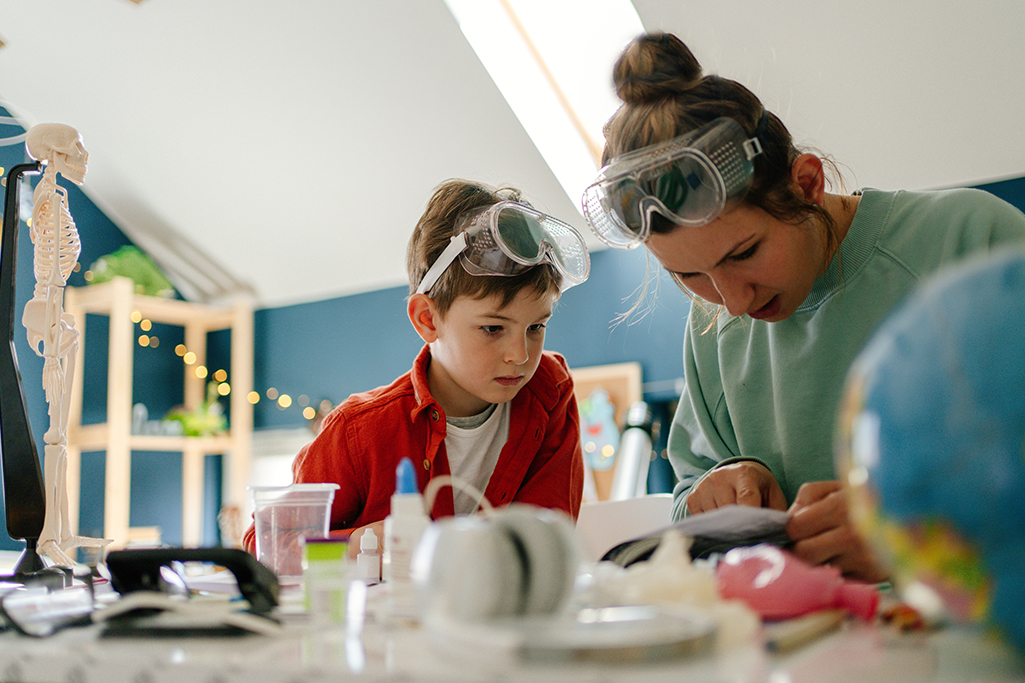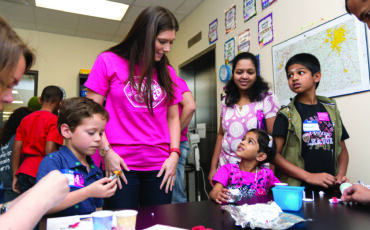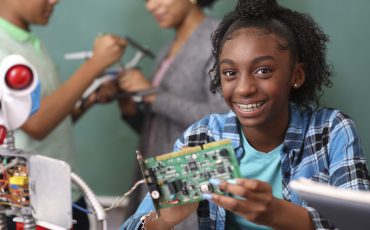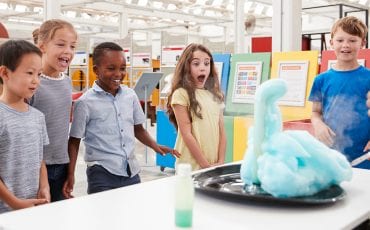A STEAM-Powered World

COVID-19. Pandemic. Virus. Herd immunity. We’ve probably heard those words before but never really thought much about them, but 2020 changed all that as science and technology jumped to the forefront of our daily lives and took over. We looked up new science terms and maybe struggled to understand the difference between someone who is asymptomatic versus someone without symptoms. And, we looked at charts that showed spread and the virus’ variations. Such is the power and importance of STEAM – Science, Technology, Engineering, Art and Mathematics.
Today the study of STEAM is even more vital and whether it is in the classroom (virtual or not) or just hanging with your children, there are opportunities to study and enjoy the STEAM subjects that are relevant to our everyday lives.
“Everybody needs a level of understanding when it comes to science, math and learning,” says Douglas Hrabe, the director of the Fernbank Science Center. “You can utilize those skills with the COVID-19 pandemic. When you’re looking at numbers, if you have some understanding of science, you can make a more informed decision and analyze the information you’re receiving.”
For several years educators and parents have focused on STEM, particularly for girls. It’s only been recently where STEM took on STEAM. Art encompasses graphic arts, animation, marketing, design, music and more, which Nanette Shillingford, the STEAM coordinator environmental specialist at DeKalb Agriculture Technology & Environment, says can be seen in architecture, automotive, theatrical and music fields. “Without art, these fields and products would be stale with no type of excitement to them,” she says. “Students get to open up and experience creativity, and their creativity in other areas will be enhanced as well.”
Expanding education to include art and design gives students additional skills to succeed as well as “softer” skills such as cross-disciplinary inquiry, collaborative problem-solving as well as sparking a child’s imagination and creative thinking.
“Art has always been the backbone of communicating science,” says David Dundee, an astronomer and director of education at Tellus Science Museum.
“Usually, all those subject areas are taught in separate silos, but the STEAM program ties all of those things together,” Hrabe says. “When you’re doing a project, you have a concept where you use science or math, but then you write a paper and use graphs and pictures to explain. It really ties them all together.”
However, it shouldn’t take a worldwide pandemic to understand the importance of STEAM in our lives, particularly when it comes to teaching children. They need to have the tools and understanding to deal with a variety of subjects from pollution to climate control to better ways to grow food, get from one place to another and create beauty. “Children are going to be our future later, so we have to develop these interests in them now, so they can get excited and not be so overwhelmed when they’re learning,” Shillingford says.
The experts agree that parents and students should not fear STEAM but instead should embrace it and work at getting a basic understanding themselves. “The idea that the Renaissance person doesn’t exist anymore is not true,” says Dundee. “Sure, scientists specialize in some branch of science, but to operate in today’s world, you have to be able to communicate in professional papers, write grants, display data in an understandable way and communicate with people who don’t have your specialty. People need to have a broad base of skills to understand the world around them.”
Hrabe agrees. “Students learn soft skills, such as communication, team building, working together,” he says. “Bright students are very good at getting that one correct answer, but working through the trial and error process STEAM promotes gives children a bigger picture of education and makes them more successful in the learning process. Learning an error can be helpful – you don’t have to get the correct answer the first time.”
Of course parents play a vital role in students becoming interested in and embracing STEAM disciplines. Almost every hobby can turn into a STEAM lesson, whether it’s driving cars, baking, taking photographs, looking at the planets or taking a hike in the woods.
Shillingford suggests finding creative ways to make real-world connections, such as touring a water plant, taking-your-kid-to-work day or shadowing a veterinarian. “Concepts seem complex until an expert shows it to you and breaks it down to help you see, touch, feel and experience those more complex topics. Help them understand how science is a part of their personal life,” she says. “Technology is all around them daily from iPhones to Samsung, PlayStations to Xbox. Show them how engineers make stuff from treehouses to dune buggy race cars and catapults. Art will generally sell itself – do they like music, how is it made, what about dancing? While mathematics is usually the one they shy away from, show them the side where they are the millionaire with money and teach them how to manage it. They have to see how it authentically and directly affects them and their personal life.”
Ask any hockey, soccer, football or basketball player how they make their shots and it’s all about the angles – also known as geometry – and velocity – aka physics!
Once you’ve sparked your child’s interest in STEAM, keep it going. Not only will STEAM knowledge help them in their everyday adult lives, but it also leads to amazing careers.
“Research STEAM-related jobs,” Shillingford suggests. “What are your children’s talents, strengths and interests?” Adds Hrabe, “There are so many jobs in the STEAM areas, it’s almost easy employment – not enough people are able to go into those jobs.”
Look around. It doesn’t matter if you couldn’t pass geometry way back when, there are so many opportunities to help your child learn about science, technology, engineering, the arts and math. Take a walk in the woods, go to a museum, attend science fairs and help your child with his or her homework. It will open up the world – and it’s a lot of fun.
– Emily Webb and Mary Welch







